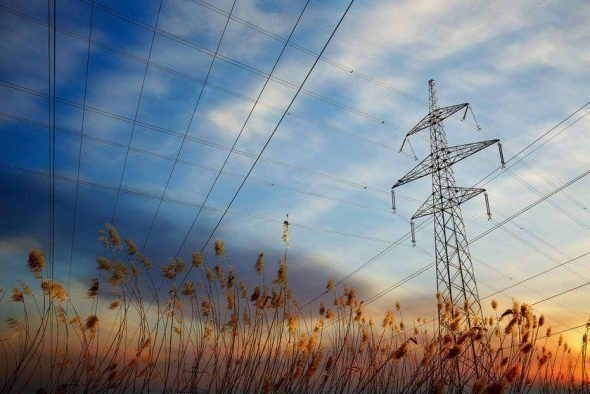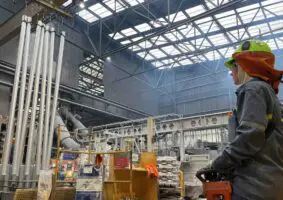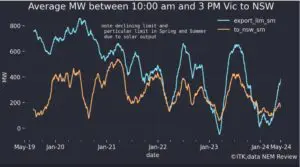
There has been an incredible amount of nonsense published by newspapers and other media outlets over the last few months purporting that there is a so called crisis unfolding in Australia’s electricity market, and in particular in South Australia due to its very high levels of renewable energy (about 36% of supply inclusive of imports from Victoria).
A number of these media outlets are demanding that Energy Ministers meeting today must urgently respond with major changes, otherwise the lights will go out and industry will collapse. What makes it all rather ironic is that this is being spouted by people who model themselves as champions of markets, but seem utterly ignorant of how the market is already working to prevent the calamities they predict.
To be clear for the most part this story has been pushed by the major incumbent power generators with the goal of either:
- undermining existing policies or preventing further new policies aimed at promoting renewable energy which act to squeeze their own generators’ revenue; or
- introduction of new policies that would increase revenues for the existing incumbent generators via either a coal power plant closure scheme that would increase wholesale power prices for the generators remaining (typically justified as facilitating an “orderly exit”), or some kind of additional payment to conventional power plants just for being available even if they aren’t actually needed to produce energy.
They’ve been ably assisted by a range of big energy consuming businesses based in SA desperate for a government bail-out after failing to hedge their exposure to wholesale electricity prices.
But in many respects they have also been assisted unwittingly by groups that have precisely the opposite agenda and wish to accelerate efforts to reduce carbon emissions. Environmentalists, frustrated by the slow pace of change in decarbonisation and often suspicious of how the profit motive could drive positive outcomes for society, have also been chiming in claiming that the market is irrevocably broken. They seem to have been duped that government needs to specifically order a coal generator to be removed in order to make room for renewable energy.
Actually the Renewable Energy Target should alone be enough to push out coal generation. And in part because they want us to achieve 100% renewable energy within the next 24 hours, they are often the first to concede the need for what are currently quite expensive options to ensure reliability like batteries, solar thermal power stations with storage, as well as new inter-state transmission upgrades.
But these just aren’t needed to ensure reliable supply until we reach levels of renewable energy neither Labor nor the Liberal Party are contemplating until the later end of the next decade or beyond.
In reality the wholesale electricity market as it is currently designed is doing precisely what you would want it to do to accommodate increasing amounts of renewable energy while also ensuring reliable supply of electricity.
Yes there is a need for some changes in how we manage our electricity system and regulate our electricity market as the level of renewable energy increases (AEMO has released a paper explaining the nature of the issues at hand). But these are best addressed more by a few technical fixes and tweaks to cope with rare and isolated events rather than some kind of wholescale, radical change.
Also we do have problem with inadequate competition in the relatively small SA power market– but this was the case years before wind and solar became a big part of SA’s power supply and Northern coal power station was still around. This is detailed in a paper commissioned by the Energy Users Association some time ago, Electricity market power in South Australia. It has also been highlighted by the Australian Energy Regulator in a number of its annual State of the Energy Market reports.
Now firstly -before everyone panics – it’s worth going back to when this talk of a crisis in South Australia started brewing last year. Back around July when Alinta announced its intention to close the 546MW Northern Power Station, it came on top of the mothballing of the 249MW steam generator component of Pelican Point and AGL’s announced plan to mothball 480MW worth of units at its Torrens A power station in 2017. The problem for both Pelican Point and Torrens was that the price of their key input cost – gas – had doubled, but the price for their output hadn’t increased much at all.
No doubt that got a few people nervous thinking what might happen if another power station would withdraw. But what happened?
Sure enough the announced withdrawal of Northern led to an increase in power contract prices to levels consistent with Torrens Island making a profit. Then lo and behold AGL announced it would not be mothballing Torrens A after all.
Furthermore – before everyone panics – if we were to assume SA’s installed wind capacity was completely useless, South Australia at present still has 2700MW of fossil fuel generating capacity plus the double circuit 650MW Heywood interconnector with Victoria (a double circuit is important because it means there’s redundancy to cope with a line failure), and the 220MW Murraylink interconnector also with Victoria – all up that’s a total of 3570MW. Meanwhile the Australian Energy Market Operator’s latest demand forecast expects SA electricity demand to peak at 3158MW in 2016 and decline thereafter (thanks in part to solar PV). So we don’t face some urgent risk of falling short of supply.
But what of the risk of even more wind farms being added to South Australia and driving out some more generators that we’ll need when the wind isn’t blowing?
Again here’s where you see our energy market at work to help ensure supply meets demand. When the wind blows strongly nowadays in South Australia there’s an abundance of electricity and prices tend to be low, sometimes even plunging into negative territory. So guess what that means for anyone else looking to build wind farms? They are looking in places other than South Australia.
The cheapest option for Australia to achieve its Renewable Energy Target and reduce emissions isn’t to add batteries and transmission lines so we can put even more renewables into South Australia than its current 36% share. It’s in fact to build wind farms in all the other states where coal is more dominant or even to build solar farms instead.
If all the journalists writing about SA suffering an energy crisis from too much renewable energy actually bothered to pick up the phone to talk to renewable energy power companies they’d learn something very important. These companies are very focussed on the alignment between their project’s power generation and when demand for power and therefore power prices are at their highest, because it is likely to represent around half their revenue.
Given this, there is a now a considerable interest in developing projects in Queensland. This is partly because it’s obviously very sunny there and solar farm costs have dropped dramatically. But it’s also because it has the fastest growing electricity demand, and the Queensland Government’s generation duopoly along with high gas prices have pushed up wholesale power prices to unusually high levels, well above what a wind farm might get in South Australia.
In addition solar developers are also looking to mount panels on frames that move to track the sun. This means their project will generate greater amounts of power at the morning and late afternoon peaks in electricity demand. In addition they tend to oversize the amount of panel generating capacity relative to their grid connection. This tends to mean that the power the grid receives will vary less across high and low periods of solar output.
Wind farm developers also have some tricks up their sleeves. Developers now tend to pay heed not just to how windy a site might be, but also whether the wind on the site blows at times which are aligned with power prices. An interesting example actually comes from South Australia, where DP Energy has elected to develop a wind farm site not because it had the highest wind speeds they could find, but because the wind tended to blow at times that are different to the large number of other wind farms in the state. This should help reduce the variability of wind power overall while delivering power at a time when it is currently more expensive for South Australians to obtain.
What else isn’t properly appreciated is that there have been considerable advancements in the ability of wind turbines to harvest power from quite low wind speeds. Developers by matching a long turbine blade with say a 2 megawatt generator instead of a 3 megawatt generator can manage to achieve levels of output that are much less variable than what has characterised wind farms in the past. Indeed capacity factors approaching 50% that are characteristic of NSW coal generators are now achievable for new wind farms. Also with the enhanced ability to exploit lower wind speed sites it opens up vastly larger geographic areas that are economically viable for wind farms. This should result in a smoothing out of wind farm output at a grid-wide level.
Another trick Australian developers are now pursuing is putting wind farms and solar farms together. These often have complimentary generation profiles and by combining the technologies with one single grid connection, a range of fixed costs can be offset over a larger amount of output. This should also act to smooth out the generation exported to the grid.
So there is in fact quite a degree of flexibility in how renewable energy projects can be configured and located that allows developers to better align generation with when electricity is in greatest demand. So rather than causing black-outs and increased power prices the invisible hand is working to encourage renewable energy companies to do precisely the opposite.
So before we start shelling out extra money to fossil fuel generators based on fear rather than the dictates of supply and demand, or on batteries, we might want to ask whether in fact we’re trying to solve a problem that the market will ensure never eventuates anyway.
This is not to deny the pain SA energy users are experiencing due to hikes in power prices. But an assault on renewable energy isn’t going to help with either sky high gas prices or the inadequate levels of competition in SA’s power market, which are the underlying cause of these price hikes.
Tristan Edis is the Director of Analysis & Advisory at Green Energy Markets. Green Energy Markets help clients including power companies, government and clean energy providers make better informed investment, trading and policy decisions.










